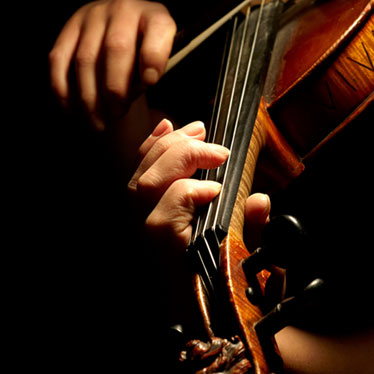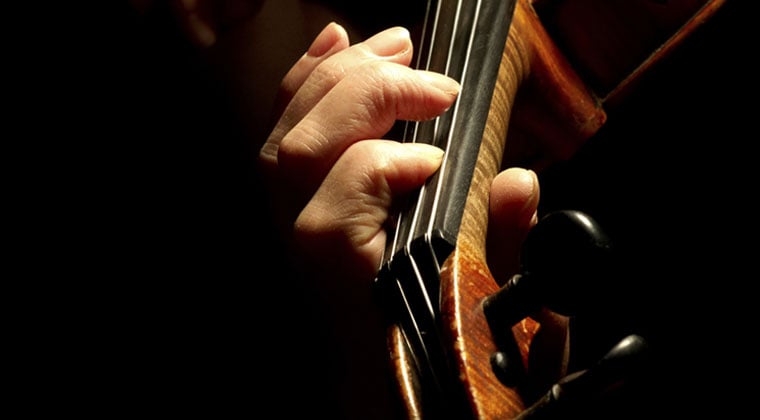Preventing Overuse Injuries on Your String Instrument

 Learning to play a string instrument is a rewarding experience. And although being zealous about practice is usually a good thing, violinists and other string instrument players need to be careful. Overuse injuries are often common among musicians. Fortunately, there are effective ways to prevent stress-related injuries when playing your violin.
Learning to play a string instrument is a rewarding experience. And although being zealous about practice is usually a good thing, violinists and other string instrument players need to be careful. Overuse injuries are often common among musicians. Fortunately, there are effective ways to prevent stress-related injuries when playing your violin.
There are certain factors that contribute to overuse injuries. By avoiding them, you can guard yourself during your violin lessons and practice. Plus, if you know how to recognize the symptoms of overuse, you can learn to adapt your playing habits to ensure that you’re preventing injuries that could become long-term problems.
Overuse injuries occur in either two ways, through acute or chronic damage. Acute injuries occur because of a concentrated effort. For example, if you spend five straight hours one night practicing a particular piece of music, then wake up with cramped fingers in the morning, the stress is caused by an acute injury. Chronic injuries are those that develop overtime, and sadly, if the warning symptoms are ignored may lead to irreparable damage.
However, you can prevent overuse injuries on your string instrument by avoiding the factors that lead to them, such as:
- Poorly conditioned muscles. If you practice when you’re tired, you’re very susceptible to injury.
- Rapid, large change in the amount of time you practice. Going from 45 minutes a day to three hours is too much, too fast.
- Improper practice technique. It’s very easy to slack off on form and posture during home practice sessions, but the proper way to hold your instrument and move your body is taught for a reason. Good posture and correct mechanics, while both sitting and standing, are the keys to preventing overuse injury. Also, too much tension while playing can make it easy to damage muscles and joints. The Alexander Technique is an effective method for stage performers to know.
- Poor practice habits. Like posture, you need to make a conscious effort to ensure that your practice session doesn’t result in chronic injury. Like all athletes, instrumentalists need to do comprehensive warm-ups before playing or practicing, and not just scales. Upper body stretches for the neck, shoulders, and back take less than five minutes to perform, but they warm up your muscles and joints, which makes it more difficult to damage them. Also, if you practice for longer than 30 minutes, make sure that you take appropriate breaks. For example, after practicing a challenging passage, switch to another area of your violin lesson to practice before trying it again.
- Changing your instrument. Some overuse injuries can be caused by changing from one instrument to another. To prevent harm, make sure to reduce your practice time at first, and adhere to the proper form and posture for playing.
- Previous injuries not fully healed. Often, when the symptoms ease musicians will go back to their normal routine. But remember, the original injury needs time to completely heal, otherwise, you'll risk further damage.
- Instrument set-up. Problems with your instrument can lead to injury. Basically, anything that requires you to compensate, like a bridge that’s too high, can lead to stress-related problems.
- Playing Conditions. Your surroundings also influence the risk of injury. Inadequate lighting will often cause eye strain or poor posture as you struggle to see the music. Likewise, playing outdoor venues in cold weather without an effective warm-up is dangerous. Cold weather makes it more difficult to move your fingers because nerve conductions slow down and joint fluids thicken. Avoid this by warming your entire body with physical stretches before you play, and by wearing layers (long underwear works great).
Recognizing and Treating the Symptoms of Overuse
Even with the best of intentions and preparation, overuse injuries do occur; but, you can make sure that they don’t become a lasting problem. Never, ever just “play through the pain.” Pain is your body’s way of telling you that there’s something wrong. The severity and level of discomfort you feel dictates the level of injury you’ve sustained and the appropriate treatment you’ll need. With early detection and treatment, you’ll be able to make a total recovery sooner.
Early stages:
- You may feel stiffness or minor soreness, or feel pain only in one area, only while playing
- You may also feel pain at multiple sites (like in the wrist, shoulder, and neck)
Advanced Stages:
- This is when the pain lasts after you stop playing
- You lose some coordination, and other daily activities are slightly painful
- Every activity that involves the area causes pain
It’s comforting to know that only a very, very small percentage of problems require a surgical solution. Most overuse injuries can be treated with rest, exercise, and improved mechanics. However, always consult a physician to determine the right treatment strategy for your specific injury.

